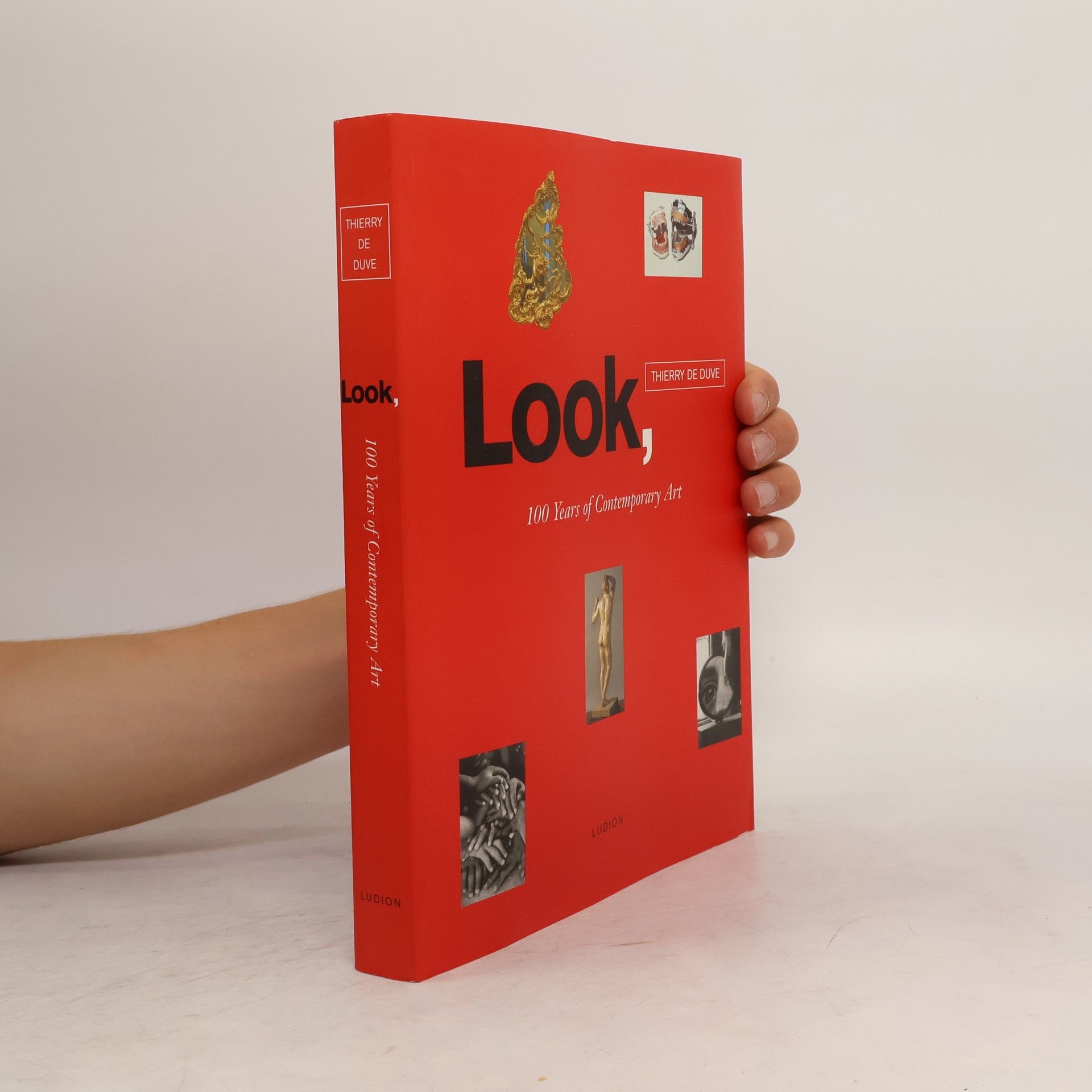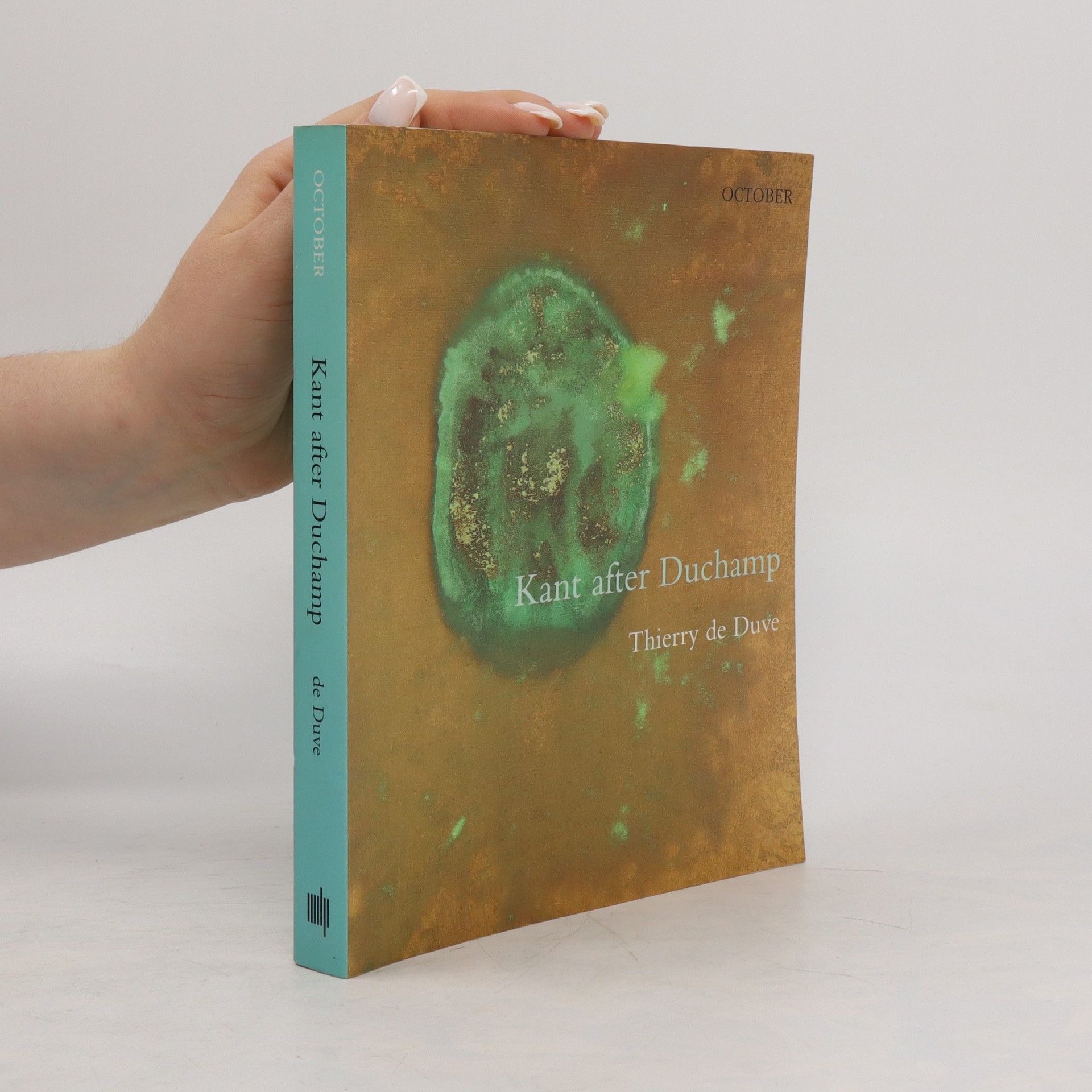Thierry de Duve Livres
Thierry de Duve est un érudit belge en histoire et théorie de l'art moderne et contemporain, dédié à la réinterprétation du modernisme. Une grande partie de ses premiers travaux abordent les défis présentés par les ready-made de Marcel Duchamp et leurs implications pour l'esthétique. De Duve esquisse une théorie esthétique pour notre époque, actualisant l'esthétique kantienne en remplaçant le paradigme de "ceci est beau" par "ceci est de l'art", et réévaluant le modernisme tout en reconnaissant ses échecs inhérents. Pour lui, l'art n'a pas d'essence mais est simplement ce que nous désignons comme tel, la création artistique reflétant un effort tragique pour rendre compte des désirs messianiques sur la manière dont la vie devrait être, tout en étant informé par une lassitude postmoderne face à la naïveté et aux inévitables lacunes du modernisme.






Kant after Duchamp
- 500pages
- 18 heures de lecture
Kant after Duchamp brings together eight essays around a central thesis with many implications for the history of avant-gardes. Although Duchamp's ready mades broke with all previously known styles, de Duve observes that he made the logic of modernist art practice the subject matter of his work, a shift in aesthetic judgment that replaced the classical "this is beautiful" with "this is art." De Duve employs this shift (replacing the word "beauty" by the word "art") in a rereading of Kant's Critique of Judgment that reveals the hidden links between the radical experiments of Duchamp and the Dadaists and mainstream pictorial modernism.
Jeff Wall: Complete Edition
- 288pages
- 11 heures de lecture
A complete overview of the pioneering artist who brought photography to contemporary art.
A reading of Duchamp's 'telegram' to the art world, a urinal signed R. Mutt.
Kunst. Fortschritt. Geschichte
- 254pages
- 9 heures de lecture
Spätestens 1970 hat die Kunst eine Schwelle erreicht, nach der alles möglich, alles erlaubt zu sein scheint. Durch diese Situation ist kunsttheoretisch insbesondere der Begriff des Fortschritts, und mit ihm: ein ganzes Geschichtsmodell, in die Krise geraten. Die erneuerte Rede vom "Ende der Kunst" zeugt davon ebenso wie die Ablösung der modernen Werkästhetik durch Theorien der ästhetischen Erfahrung. Während sich mithin in der philosophischen Ästhetik eine generelle Skepsis gegenüber der geschichtlichen Platzierung von Werken oder künstlerischen Strategien eingestellt hat, ist eben dies jedoch nach wie vor ein zentrales Anliegen der Kunstkritik. So ist die Feststellung von Neuem für sie ebenso elementar wie dessen normative Auszeichnung: Man kann eben doch nicht alles zu jeder Zeit machen. Und das hat nicht nur einen innerkünstlerischen, sondern immer auch einen gesellschaftlichen und politischen Sinn. Von daher stellt sich die Frage, auf welche Weise heute, mit Blick auf die Entgrenzungstendenzen in der Kunst der letzten vierzig Jahre, - doch oder immer noch - von künstlerischem Fortschritt gesprochen werden kann und welche Konsequenzen dies für den Begriff von Kunst hat. Die Beiträge des Bandes diskutieren diese Frage für Bildende Kunst, Film, Musik, Literatur und Theater.